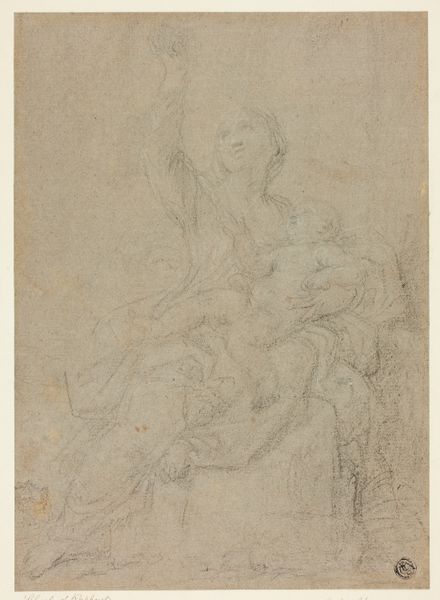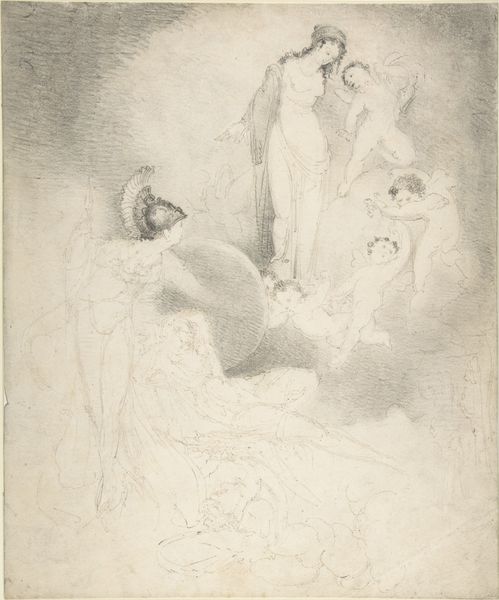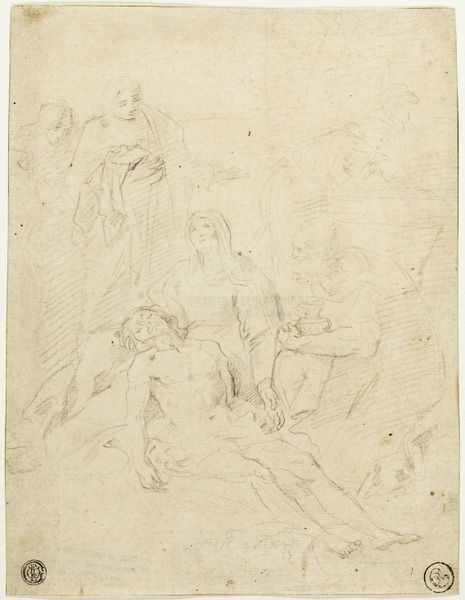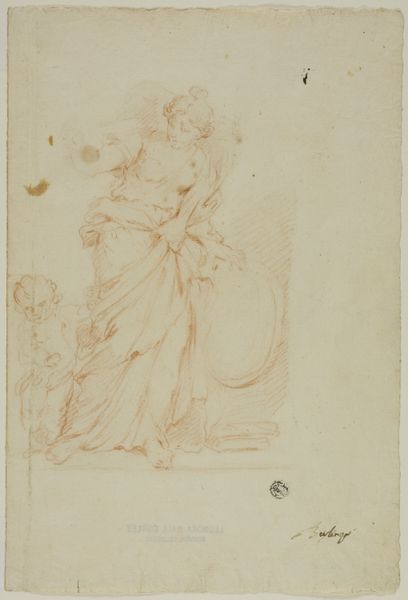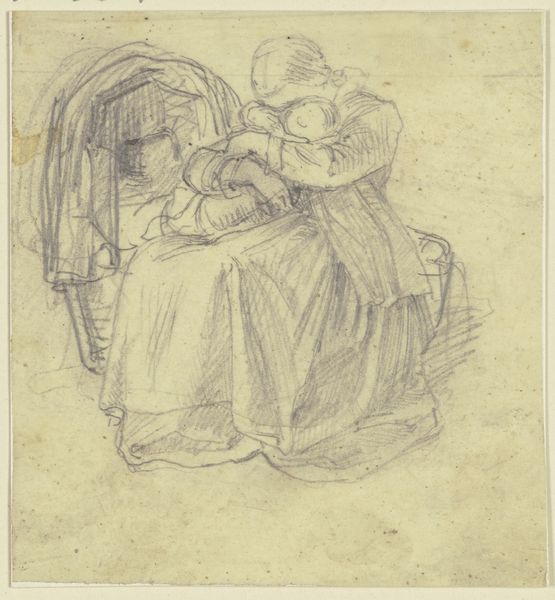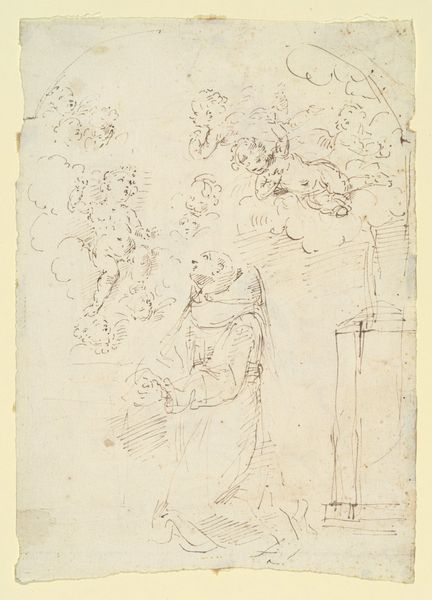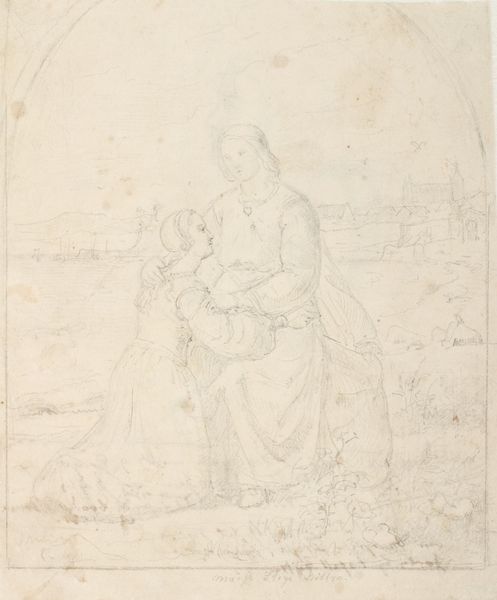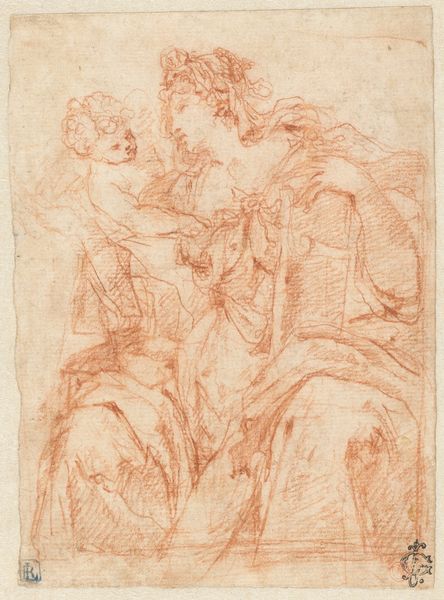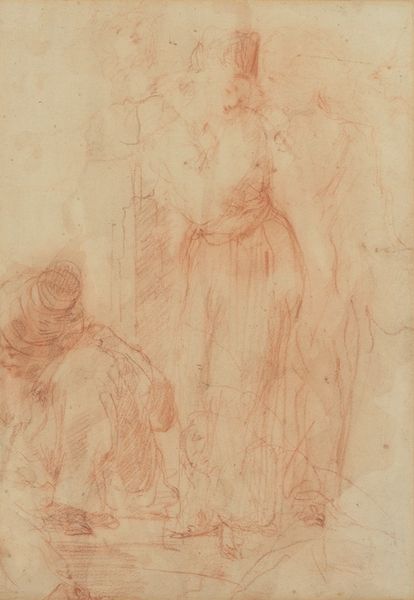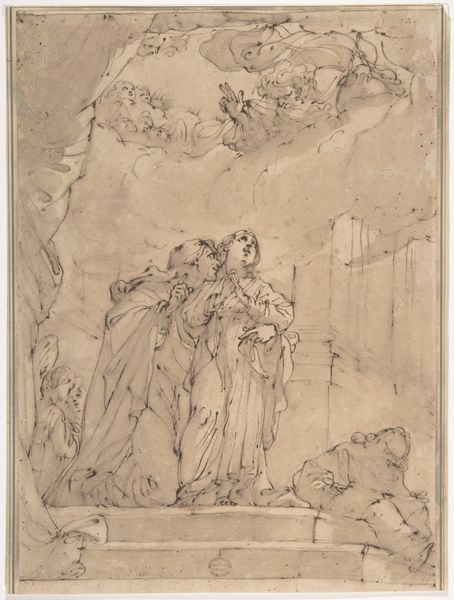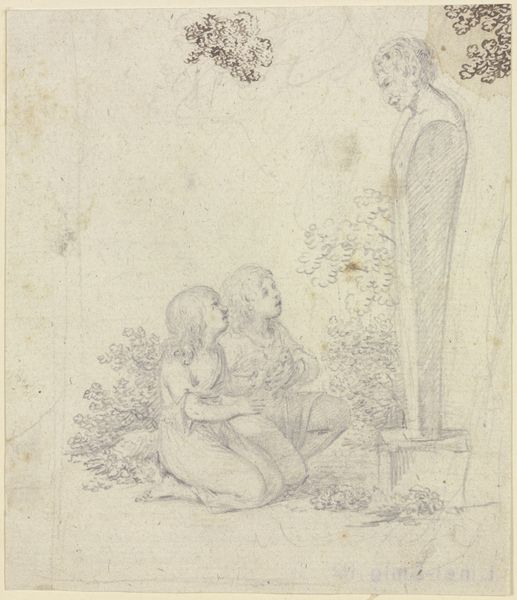
Büßender Heiliger vor dem Kruzifix (Franziskus_ Hieronymus_)
0:00
0:00
drawing, paper, chalk, graphite
#
drawing
#
toned paper
#
light pencil work
#
pencil sketch
#
etching
#
paper
#
personal sketchbook
#
german
#
ink drawing experimentation
#
chalk
#
15_18th-century
#
graphite
#
sketchbook drawing
#
watercolour illustration
#
sketchbook art
#
watercolor
Copyright: Public Domain
Curator: This is Johann Baptist Zimmermann’s study, “Büßender Heiliger vor dem Kruzifix (Franziskus_ Hieronymus_)” from the Städel Museum. It appears to be an intriguing preparatory sketch done with graphite, chalk and pencil on paper. Editor: There's an immediate sense of fragility to it, a sketch capturing a transient moment. The paleness almost obscures the penitent figures. Is it capturing repentance or contemplation? Curator: Considering the artistic production of the time, the process holds particular significance. Zimmermann, with this drawing, would have engaged with readily available materials—chalk, graphite, and paper—representative of workshops in the 18th century. Editor: Yet, the very ethereal quality draws me in. Look at the deliberate, almost hesitant, linework and sparse tonality—it achieves an uncanny degree of spatial depth given its minimalist construction. Curator: What's more, examining the saint’s humble stance before the crucifix reveals how the socio-political functions of religious artwork intersect with craft practices in Baroque Europe. The commission would dictate a certain somber, emotional intensity appropriate to the penitential theme. Editor: Agreed, though I’d argue that emotionality derives purely from the stark formal relationships. Observe the placement of figures within the composition: the crucifix looming large, casting a shadow over the kneeling figure—a masterclass in visual rhetoric! Curator: Undoubtedly. However, the availability, cost and distribution networks of these drawing materials must be accounted for. How would this drawing’s message be received across social stratifications given its intrinsic materiality and its association with devotion? Editor: Such concerns seem almost anachronistic when the drawing itself seems timeless in its rendering of contrition through the very mechanics of visual presentation! Regardless of the artist's time, those underlying geometric harmonies retain expressive force. Curator: Well, by focusing on material access and patronage dynamics we better understand art production within its specific moment—illuminating these drawing traditions! Editor: But it is that tension—between structure and looseness—that makes the sketch so compelling on an aesthetic plane alone. It is this intrinsic duality and carefully composed tension which makes the art memorable to viewers such as ourselves.
Comments
No comments
Be the first to comment and join the conversation on the ultimate creative platform.

